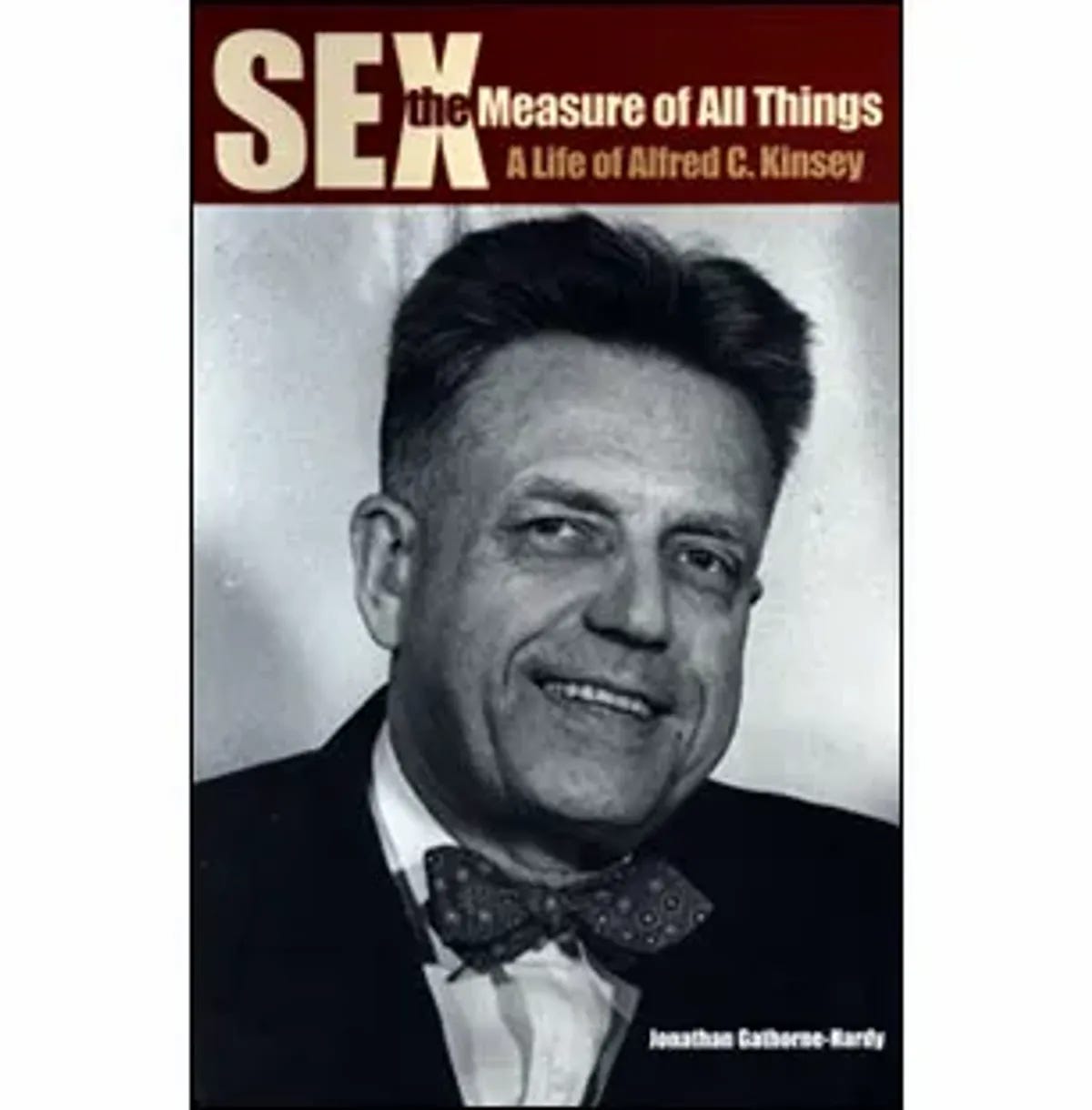Author’s note: Apologies up front. This article has a paywall down below, but there’s plenty of good reading before you get to it. It’s a blunt effort to turn some of you into paid subscribers so I never have to return to my previous job as the assistant manager of the second largest Kinkos in northeast Albuquerque.
I don’t know whether the NoFap movement is just another internet trend like the singing of sea shanties or if it’s a bona fide social movement with far-reaching influence. In case you’re lucky enough to be unfamiliar with the term, let me destroy your innocence:
The Fap portion of NoFap refers to masturbation and the No just means no, otherwise known as abstinence. From what I can find, the expression is an onomatopoeic slang term that first appeared in a web comic from 1999. Yeah, that’s right, fap is from the sound made when a male character masturbated.
The movement was founded in June 2011 by a Pittsburgh web developer after reading a Reddit thread about a 2003 study that claimed that men who refrained from masturbation for seven days experienced a 146% rise in testosterone.
Speed forward to today. As of January 6th, 2024, the NoFap online community allegedly had more than 350,000 registered members, and this of course excludes the whole “I wouldn’t join a club that would have my member as a member” group, which probably totals in the tens of thousands.
The question is, why are some modern males suddenly embracing “fapstinence”?
Part of it may well be a noble effort to help people return to some sort of sexual normalcy in the face of porn addiction. Another part of it may lie in watered down Eastern mysticism. One of the tenets behind the Dharmic practice of brahmacharya -- practiced by yogis, Buddhists, Hindus, and Jainists – was to preserve “sexual energy.” This meant keeping their hands out of their kurtas, robes, and angarkhas, if you know what I mean.
Not only was this practice thought to be virtuous, but failing to remain master of your domain was thought to result in a loss of virility.
Of course, it’s unlikely that many current day fapstainers are well-versed in Eastern religious practices, but somehow this notion about abstinence and virility wriggled its way into Western consciousness as many of the anti-fappers, in addition to the incels and even the Proud Boys, seem to have embraced tenets of it to varying degrees.
These groups appear to believe that abstaining from masturbation will increase their testosterone levels and in turn, their virility and confidence, thus giving them the strength and courage to cold approach women or be more manly in general.
Some even believe that this abstinence-derived higher T will endow then with a version of Kramer’s kavorka – “the lure of the animal” – and eliminate the need to approach women altogether because they’ll come a runnin’ of their own volition.
This higher T will supposedly also affect their body comp, giving them more muscle and less fat, thereby compounding their animal magnetism.
There are also seemingly sane but probably incorrect reasons for practicing semen retention, among them the belief that abstaining from masturbation for a few days or even weeks (not months or years, though) will result in increased fertility, thereby increasing the chances for procreation.
Standing in stark contrast to the fapstainers are those who believe, probably because of the influence of porn, that the amount of sperm they produce (and distribute) is a sign of virility. As such, they treat their testicles like an agribusiness, seeking ways to maximize spermatic crop production.
Let’s look at all these beliefs and practices and see if any of them have any merit.
A Brief History of “Semen-Loss Anxiety”
Before we delve into the science of sperm (a rare branch of study with no name attached to it), we need to acknowledge that only about only 5% of that white stuff is actually sperm. As such, it should instead be referred to as ejaculate, or, less formally, cum.
The rest of ejaculate consists of a variety of fluids, one of which is produced by the seminal vesicles and allows sperm to survive the acidic, hostile environment of the vagina. Another component is prostatic fluid, which is the fluid that allows sperm to swim through the vagina to the uterus and the fallopian tubes beyond. Lastly, there’s a bit of fluid released by the bulbourethral glands near the urethral opening that allow the sperm to “grease up” before they start swimming across the biological English Channel that’s the vagina.
So yes, most of that fluid, most of that ejaculate, is merely the sauce that carries the spice. But let’s give sperm its due. As pointed out by Syracuse University biologist Scott Pitnick, sperm are the only cells in the body destined to be cast forth willingly into a foreign environment.
Sperm has always stood alone in the pantheon of human cells, though. Heck, we weren’t even aware of its existence until 1677 when the father of the microscope, Anton van Leeuwenhoek, thought to examine his own ejaculate. He was dumbstruck by the “animalcules” he saw wriggling around.
Van Leeuwenhoek was so mortified by his discovery that he was reluctant to turn his findings over to the Royal Society, but he ended up doing so anyway. They were published in 1678, which subsequently brought forth all kinds of hypotheses.
Prior to van Leeuwenhoek’s findings, theories about how humans made more humans were colorful, to say the least. Predominate among them was that the ejaculate emitted vapors that somehow stimulated women to make babies.
(Oddly enough, modern research suggests that a fluid in sperm does indeed emit “vapors” that stimulate ovulation, or more precisely, it “emits” neural growth factor, or NGF. The factor travels through the bloodstream to the brain, causing the hypothalamus and pituitary to release the hormones necessary for pregnancy (Adams et al., 2023). As such, males with more NGF in their semen might be more fertile.)
Another theory was that each spermatozoan contained a tiny, completely formed pre-human. According to proponents of this theory, women contributed nothing to the fetus; they simply gave the tiny pre-formed humans a place to hang out, feed, and develop until they were ready to launch.
It wasn’t until the mid-19th century when improvements to the microscope allowed scientists to observe the process of embryonic development courtesy of transparent sea urchin eggs. Those observations pretty much put the “preformation” theory to rest.
Regardless of these early observations, masturbation itself was still considered a sin, as it had been from the time of Hippocrates. It wasn’t until the 18th century, though, that it came to be regarded as downright deviant and harmful and something that would eventually lead to insanity and bodily decay. Even nocturnal emissions (a “wet dream”) were deemed sinful. And this wasn’t just the belief of a few scolds dressed in robes, it was also accepted medical doctrine.
These beliefs started to dissipate around the beginning of the 20th century, at least among people in the medical profession. However, paranoia and guilt largely remained until sex-researcher Alfred Kinsey published his work on sexual behavior. Only then did society began to accept masturbation as natural, normal, and even beneficial.
Still, there remain cultures that are afflicted by what’s been coined “semen-loss anxiety.” For instance, segments of the Indian continent suffer from “dhat-syndrome.” It describes usually young, unmarried men who, because of masturbation or nocturnal emissions, allegedly suffer from fatigue, weakness, anxiety, and feelings of guilt.
A related syndrome, shen-k’uei, is described in China where, again, loss of semen through sex, masturbation, or nocturnal emissions is linked to several medical problems.
Given this rich historical and cultural aversion to masturbation, it’s not difficult to understand the existence of the American NoFap movement, even if their motivations might be slightly different. Many of today’s NoFappers – aside from those that are fighting porn addiction -- might not feel the same guilt about pleasuring themselves, but most do believe that abstinence will make them more virile and more attractive to the opposite sex, courtesy of the alleged increase in testosterone that will occur if they keep their hands out of their pants.
But does it really?
Keep reading with a 7-day free trial
Subscribe to TC Luoma to keep reading this post and get 7 days of free access to the full post archives.





